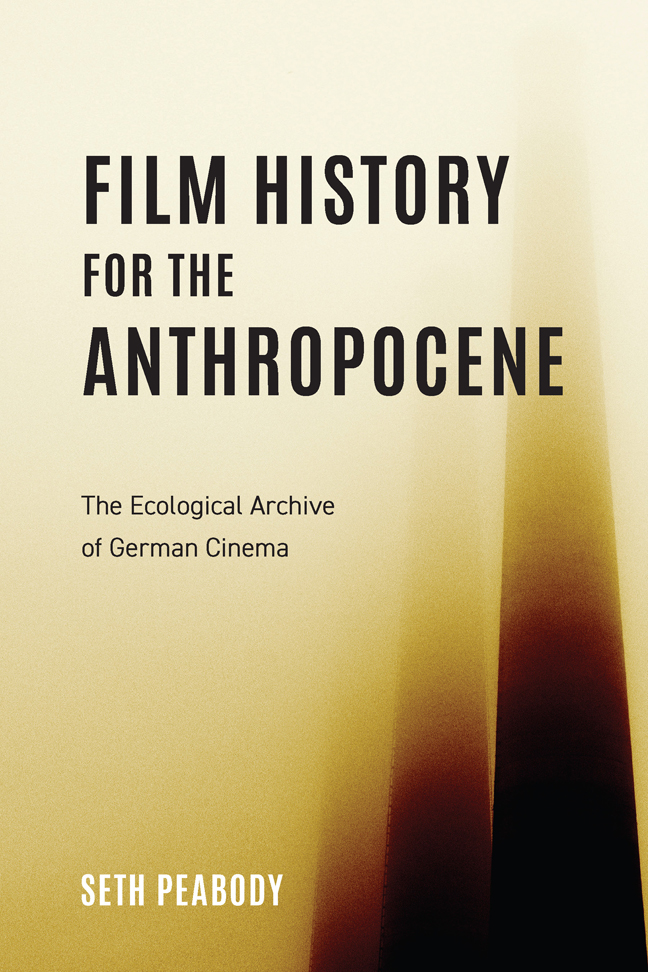5 - Greenwashing in Black and White: Berlin: Die Sinfonie der Großstadt, Die Stadt der Millionen, Menschen am Sonntag
Published online by Cambridge University Press: 21 February 2024
Summary
4 million people waiting …
Marx noted that capitalism is in the first instance a question of managing time, of “the annihilation of space by time” …
One Of The Great Legends of film history centers around the arrival of a train. As an excited audience watches the beginning of a film, a long passenger train glides from the right-hand edge into the middle of the frame toward the camera. The legend, of course, is that when this short film was first seen in 1895, viewers were terrified and ran away from the screen as if a real train were barreling down upon them. They did not need to wait for the train—it was already moving, and their response, according to the legend, was to get out of the way.
Building on this long-standing sense of connection between the physicality of railroad infrastructure and the creative medium of film, the present chapter examines semi-documentary films from Weimarera Berlin. Transport infrastructure features prominently in these films. Walter Ruttmann's Berlin: Die Sinfonie der Großstadt (Berlin: Symphony of the Metropolis, 1927), begins with a long prelude showing a train ride into the city and features scenes of street traffic throughout the film. The first feature-length Berlin film, Adolf Trotz's Die Stadt der Millionen (City of Millions) from 1925, ends with an animated image of numerous train lines descending on a picture of the bear that serves as the city's symbol. Menschen am Sonntag (People on Sunday, 1930) shows an allday excursion by regional rail to a lake on the edge of the city; it also emphasizes diverse other types of urban mobility throughout the film. In all of these cases, transport infrastructures seem to stand in for the mobility, interconnectivity, and complexity intrinsic to the urban setting. The repeated focus on transportation technologies reveals an awareness of the underlying infrastructures that make the flurry of urban activity possible and a desire to render those infrastructures visible through film.
As elsewhere in this book, my use of the term “infrastructure” in this context is intentionally broad. Matthew Gandy notes that the word originally referred to railroad systems, but has “gradually acquired a wider set of meanings and applications, and has proved surprisingly malleable in relation to the development of different types of technical and organizational networks.”
- Type
- Chapter
- Information
- Film History for the AnthropoceneThe Ecological Archive of German Cinema, pp. 139 - 157Publisher: Boydell & BrewerPrint publication year: 2023



